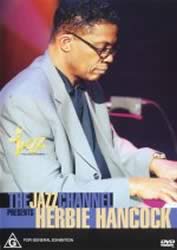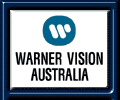Hancock, Herbie-The Jazz Channel Presents (2000) |
|
Hancock, Herbie-The Jazz Channel Presents (2000) |
|


|
| BUY IT |
| General | Extras | ||
| Category | Music | Featurette-Meet The Artist | |
| Rating |

|
||
| Year Of Production | 2000 | ||
| Running Time | 105:06 | ||
| RSDL / Flipper | RSDL (63:00) | Cast & Crew | |
| Start Up | Menu | ||
| Region Coding | 2,4 | Directed By | Waymer Johnson |
|
Studio
Distributor |
 Warner Vision |
Starring | Herbie Hancock |
| Case | Soft Brackley-Transp | ||
| RPI | $39.95 | Music | Herbie Hancock |
| Video | Audio | ||
| Pan & Scan/Full Frame | Full Frame |
English Dolby Digital 5.1 (448Kb/s) English Dolby Digital 2.0 (224Kb/s) English dts 5.1 (1536Kb/s) |
|
| Widescreen Aspect Ratio | None | ||
| 16x9 Enhancement | No | ||
| Video Format | 576i (PAL) | ||
| Original Aspect Ratio | 1.33:1 | Miscellaneous | |
| Jacket Pictures | No | ||
| Subtitles | None | Smoking | No |
| Annoying Product Placement | No | ||
| Action In or After Credits | Yes, end titles over last song | ||
The Jazz Channel Presents: Herbie Hancock is another in a series of TV specials featuring concerts by black jazz musicians produced by BET on Jazz.
Herbie Hancock, of course, is the famed jazz pianist that almost needs no introduction. I must own at least half a dozen CDs that feature him somewhere in the musician line-up, and it's an indication of how in demand he is as a session pianist in addition to his own albums. Born in Chicago in 1940, he was a bit of a child prodigy, having started playing when he was 7 years old and performing Mozart's D Major Piano Concerto with the Chicago Symphony when he was 11. He soon turned to jazz, and has been associated with famous musicians such as Donald Byrd and Miles Davis. He released his first album in 1963 (Taking Off) and pioneered the use of electronic synthesizers in jazz in albums such as Headhunters (1973) and Future Shock (1983).
Along with contemporaries Chick Corea and Keith Jarrett, Herbie has been a primary influence on contemporary jazz piano. He is perhaps not as lyrical as Keith Jarrett, nor does he dabble in the neo-classicism of Chick Corea, but his pristine and crisp yet rhythmic playing blends in well with most jazz styles, and his own albums tend to be somewhat fusion oriented, crossing genres such as funk, R&B, and even electronica and dance. Indeed, Herbie's popularity with the disco crowd at times has alienated his jazz fans. Lately, he has made a partial return to his jazz roots and his Gershwin album in the late 1990s was highly regarded. He has won numerous Grammy awards. He is credited for having introduced trumpeter Wynton Marsalis to the world and appears often on television, including hosting a programme on technology and music on the BET On Jazz cable channel.
This is a fairly long concert in comparison with others in the Jazz Channel Presents series, lasting just over one and three quarter hours. It features Herbie mostly on a Steinway grand piano (although he occasionally plays a synthesizer mounted on top of the piano set to a string timbre). He is accompanied by a ensemble that doesn't appear to be credited on either the DVD cover or in the closing credits, but it includes a percussionist, a drummer, a bass guitarist, a trumpeter and a saxophonist. He plays a selection of Gershwin songs plus other jazz standards as well as a few of his own compositions. Given that he only plays nine songs in this concert, some of them are quite long in duration with the last number (Maiden Voyage) lasting over twenty minutes.
There are some fascinating uses of some really weird percussion instruments and Herbie himself is not above tinkering with the piano strings. I found his interpretations of Gershwin to be somewhat cerebral, but there's no denying his talent and sense of rhythm. The Man I Love is the sole ballad on the track list. One Finger Snap features some free form trumpet playing and the last song Maiden Voyage is somewhat neo-classical in structure.
If you are a Herbie Hancock fan, then I don't need to tell you to rush out and grab a copy, you have probably already pre-ordered it. If you are not, but have an open mind, I would encourage you to check this out.
| 1. Fascinating Rhythm 2. St. Louis Blues 3. Cotton Tail 4. Blueberry Rhyme 5. The Man I Love | 6. Here Come De Honey Man 7. Cantaloupe Island 8. One Finger Snap 9. Maiden Voyage |
As the concert was recorded for TV, it is presented in a full-frame (1.33:1) aspect ratio.
As with other recent Jazz Channel Presents ... discs, the concert appears to have been recorded directly onto digital video. Therefore the transfer quality is excellent, featuring sharp, crisp images with perfect colour saturation and deep black levels. The detail levels are so good I can notice the polish marks on the piano, as well as on the perspex shield around the drums.
There's no video noise at all in sight, and the transfer itself is artefact free (apart from the occasional slight shimmering). All in all, I don't think anyone can ask for more (well, widescreen would be nice!).
There are no subtitle tracks accompanying the feature, which spans both layers of an RSDL disc. The layer change occurs at 63:00 and is mildly disruptive as it breaks the continuity for a brief moment but at least it is located between songs.
| Sharpness | |
| Shadow Detail | |
| Colour | |
| Grain/Pixelization | |
| Film-To-Video Artefacts | |
| Film Artefacts | |
| Overall |
There are three audio tracks on the disc; English Dolby Digital 5.1 (448 Kb/s), Dolby Digital 2.0 (224 Kb/s), and dts 5.1 (1536 Kb/s). I listened mainly to the dts track, but occasionally switched across to the other two tracks.
Surprisingly, the dts track is mastered at a level about 3 dB below the Dolby Digital 5.1 track. It is pleasant enough to listen to, but sounds a bit dull. It is a native 5.1 mix (as opposed to an artificially enhanced stereo track) as the audience claps are primarily directed towards the rear speakers.
In accordance with best practice, most of the music is carried by the front left and right speakers, with the remaining speakers (including the centre channel) primarily used for ambience. Occasionally percussion sounds bleed into the rear channels, and the subwoofer is used only in a supporting role.
In comparison, the Dolby Digital 5.1 track seemed to have more "presence" and more high frequency content (even if a lot of the content is just compression artefact as is typical for Dolby Digital material). However, once I'd adjusted the volume the two tracks were quite similar and I'm not sure I would have been able to reliably distinguish between them in scientifically controlled conditions. To me the sound of the trumpet and saxophone in the Dolby Digital 5.1 audio track sounds just a little bit more piercing and less natural-sounding compared to the dts version. I also get the feeling there was more "bleeding" of instruments to the rear channels in the Dolby Digital 5.1 audio track.
By way of comparison, the Dolby Digital 2.0 audio track is also mixed at a lower level and feature reduced high frequency content, but surprisingly did not sound totally pathetic (compared to the Dolby Digital 2.0 track on other music DVDs I have heard). If I turned off Dolby Pro Logic decoding, and turned up the volume it actually sounded okay though not as engaging as the other two tracks.
There is no dialogue on the audio track so I was not able to evaluate whether the disc has any audio synchronisation issues.
| Dialogue | |
| Audio Sync | |
| Clicks/Pops/Dropouts | |
| Surround Channel Use | |
| Subwoofer | |
| Overall |
The only extra on this disc is a short featurette.
The menus are full frame and static.
This is a short interview with Herbie Hancock captured on full-frame video apparently before the concert performance. The accompanying audio is Dolby Digital mono. Herbie mostly talks about his Gershwin album and how that came about.
NOTE: To view non-R4 releases, your equipment needs to be multi-zone compatible and usually also NTSC compatible.
As far as I can tell, the Region 1 and 4 versions of this title has identical content apart from NTSC vs PAL formatting.
The Jazz Channel Presents Herbie Hancock features the legendary jazz pianist performing a set of Gershwin and jazz standards, as well as his own material, on an acoustic piano accompanied by a jazz ensemble. The video and audio transfers are excellent, but the extras are limited to a featurette.
| Video | |
| Audio | |
| Extras | |
| Plot | |
| Overall |
| Review Equipment | |
| DVD | Pioneer DV-626D, using Component output |
| Display | Sony VPL-VW10HT LCD Projector, ScreenTechnics 16x9 matte white screen (254cm). Calibrated with Video Essentials/Ultimate DVD Platinum. This display device is 16x9 capable. |
| Audio Decoder | Built in to amplifier/receiver. Calibrated with Video Essentials/Ultimate DVD Platinum. |
| Amplification | Denon AVR-3300 |
| Speakers | Front and rears: B&W CDM7NT; centre: B&W CDMCNT; subwoofer: B&W ASW2500 |